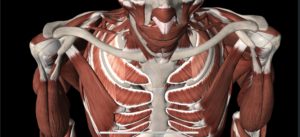 More proof that the 3X Pitching Velocity Program has more drills, lifts, and exercises that highly correlate to pitching velocity than any other program in the game. This study in particular defines the effect of using a medicine ball throw, like the med ball routine in the 3X Pitching Velocity Program, to train trunk rotation power to increase pitching velocity. This study proves how important the trunk is to converting leg power and increasing arm speed.
More proof that the 3X Pitching Velocity Program has more drills, lifts, and exercises that highly correlate to pitching velocity than any other program in the game. This study in particular defines the effect of using a medicine ball throw, like the med ball routine in the 3X Pitching Velocity Program, to train trunk rotation power to increase pitching velocity. This study proves how important the trunk is to converting leg power and increasing arm speed.
This study also completely defines the critical function of the trunk in the high-velocity pitcher and how medicine ball throws and weight training is the most effective way to enhance the function of the trunk to increase pitching velocity. If you know the format of the 3X Pitching Velocity Program, you would know that the medicine ball throws and Olympic Lifting which is proven to be trunk dominant, are the bread and butter of the entire pitching velocity training program.
In this article, we will first look at the trunk and arm anatomy and then into the correlations between medicine ball throws and trunk rotation velocity to a significant increase in pitching velocity. We will then look into more of the function the trunk plays in generating pitching velocity and how most pitching programs waste their time overvaluing the arm muscles to generate speeds when studies show the hip and trunk muscle groups are almost double the value of the upper extremities when it comes to generating speeds.
Trunk and Arm Anatomy of the Pitcher
Shoulder
 Kibler (1994) reported 54% of the total force generated in the arm is developed proximally and must be maintained through proper rotation of the scapula, thus indicating that the scapula plays a vital role in maintaining the progression of energy throughout the kinetic chain during overarm motion (2).
Kibler (1994) reported 54% of the total force generated in the arm is developed proximally and must be maintained through proper rotation of the scapula, thus indicating that the scapula plays a vital role in maintaining the progression of energy throughout the kinetic chain during overarm motion (2).
Here is the anatomical breakdown of the shoulder.
Primary Joint Features of Shoulder
- Glenohumeral
- Acriomoclavicular
- Sternoclavicular
Proper Scapula Function of Throwing Shoulder
- Properly retraction allowing for cocking of the baseball
- Proper protraction allowing for proper acceleration forward
Primary Musculature Protracting Scapular
- Serratus anterior
Primary Musculature Retrating Scapular
- Trapezius
- Levator scapulae
- Rhomboid
Primary Moves of the Arm
- Pectoralis major
- Latissimus dorsi
- Deltoids
Rotator Cuff Musculature
- Supraspinatus
- Infraspinatus
- Teres minor
- Subscapularis
Elbow
Here is the anatomical breakdown of the elbow.
Primary Bone Features of Elbow
- Humerus
- Ulna
- Radius
Primary Functions of the Elbow
- Flexion
- Extension
- Supination
- Pronation
Primary Flexors of the Elbow
- Biceps brachii
- Brachioradialis
- Brachialis
Primary Extensors of the Elbow
- Triceps brachii
- Anconeus
Supination Musculature of the Elbow
- Biceps brachii
- Supinator
- Brachioradialis
Pronation Musculature of the Elbow
- Pronator teres
- Pronator quadratus
The UCL acts to contribute stabilization for 55% of the valgus stress created in the elbow (4).
Trunk
This trunk region acts to maintain stability in the body to help resist perturbations and to provide a steady base against which the extremities can generate force (5,6).
Here is the anatomical breakdown of the trunk.
Regions That Define the Trunk
- Inferiorly the pelvic floor
- Anteriorly the abdominal musculature
- Posteriorly the paraspinal musculature
Anterior Abdominal Musculature Anatomy
- Rectus abdominus
- Transverse abdominus
- Internal and external obliques
Functions of the Abdominal Musculature
- Rectus abdominus acts to flex and rotate the trunk
- Internal and external obliques primarily act to laterally rotate the trunk
- Transverse abdominus acts to compress the abdominal region and stiffen the torso and lumbar region
The Pelvis Musculature Anatomy
- Levator ani
- Coccygeus.
Function of the Pelvis Musculature
- Provide stability for the pelvic region
Medicine Ball Throws and Pitching Velocity
In the original case study cited above, they had athletes perform several different exercises from throwing a medicine ball to doing core plank exercises and what they found was:
The average throwing velocity was strongly correlated with the average peak trunk rotational velocity for the pitchers.
The right and left medicine ball tosses were strongly correlated with throwing velocity (1).
The medicine ball throws where the only exercises that had this positive correlation with throwing velocity out of all the exercises. This isn't the only study though that has discovered this correlation of throwing velocity or trunk angular velocity to medicine ball throws. Another study also found a similar result:
According to a study by Stodden (2008), the medicine ball throw was the test that generated the largest angular trunk velocity (7).
The original study stated that the reason the medicine ball throws are so effective in increasing throwing velocity is because it increases trunk power and stability. The best way to understand the effects that the trunk power and stability have on arm speed is in this study by Santana et al (2007).
The study reported that the limiting factor for a standing bench press was the contralateral trunk musculature. Therefore, someone lacking in trunk stability will be limited in performing a task involving the extremities, despite the strength of the extremity (3).
This means that your throwing arm is only as strong and powerful as your trunk. The weaker the trunk the weaker the arm becomes. Let's look into what helps develop more trunk power and stability so we can increase throwing velocity.
The Trunk and Pitching Velocity
Olympic lifting is by far the best trunk development approach in the world. To give you an example, Matt Bruce a retired Olympic Lifter once was challenged in a core plank contest. He held a plank position for over 5 minutes with 250 lbs on his back. He is 5'9 and 175lbs. How did he develop this trunk strength, not with core exercise alone but with his incredible front squat strength and Olympic snatching ability?
When you perform a front squat your core must compress to stabilize your trunk as you lower the weight in a full squat. The reason it must compress is that the weight is sitting on the top edge of the chest. If it is a good amount of weight, like most Olympic Lifters use, then the core wants to collapse and drop the weight. Holding a stable core to prevent the drop challenges the core to its ultimate potential. Well above the level of a crunch, a v-up, or sit-up demands.
Snatching the weight into an overhead squat position takes the core challenge of the front squat to another level. It is the ultimate core challenge and only a few people can do it at a level of weight over 2X your body weight which is at the Olympic level. To understand how challenging this lift is on the core all you need to do is try performing an overhead squat with just a barbell. Now, imagine doing that with your body weight or more on the bar.
This is why combining the med throws with the Olympic lifts is the ultimate way to increase trunk power but don't forget what drives the trunk. The lower extremities are responsible for driving the hips which then move the trunk, a.k.a 3X Pitching.
The Best Pitching Velocity Program
If you listen to any of the testimonials of those pitchers who added 5-10mph and went into the 90+mph range on the 3X Pitching Velocity Program you will hear most of them say that the most significant part of the 3X Pitching Velocity Program to increasing their pitching velocity was the combination of the med throws and Olympic Lifts. It isn't that all of the other drills, lifts, and exercises we perform in the 3X Pitching Velocity Program are NOT important because they all serve a purpose. It is that the med throws and Olympic Lifts produce the bigger gains.
To learn more a the 3X Pitching Velocity Program, continue reading the site and signup
Pitching Velocity Reference:
- Jay W. Young, Oral Examination Committee, Dr. James Onate, Advisor Dr. Ajit Chaudhari, Co-Advisor. - Trunk Contributions to Baseball Pitching Velocity - An Undergraduate Senior Thesis Presented in Accordance with the Requirements for Graduation with Research Distinction in Biomedical Engineering. - The Ohio State University, Columbus, Ohio 43210
- Kibler WB. - Clinical biomechanics of the elbow in tennis: implications for evaluation and diagnosis. Medicine and science in sports and exercise. - Oct 1994;26(10):1203-1206.
- Santana JC, Vera-Garcia FJ, McGill SM. - A kinetic and electromyographic comparison of the standing cable press and bench press. - Journal of strength and conditioning research / National Strength & Conditioning Association. Nov 2007;21(4):1271-1277.
- Morrey BF, An KN. - Articular and ligamentous contributions to the stability of the elbow joint. - The American journal of sports medicine. Sep-Oct 1983;11(5):315-319.
- Willson JD, Dougherty CP, Ireland ML, Davis IM. - Core stability and its relationship to lower extremity function and injury. - Journal of the American Academy of Orthopaedic Surgeons. 2005;13(5):316-325.
- Leetun DT, Ireland ML, Willson JD, Ballantyne BT, Davis IM. - Core stability measures as risk factors for lower extremity injury in athletes. Medicine and science in sports and exercise. - Jun 2004;36(6):926-934.
- Stodden DF, Campbell BM, Moyer TM. - Comparison of trunk kinematics in trunk training exercises and throwing. - Journal of strength and conditioning research / National Strength & Conditioning Association. Jan 2008;22(1):112-118.


Trackbacks/Pingbacks